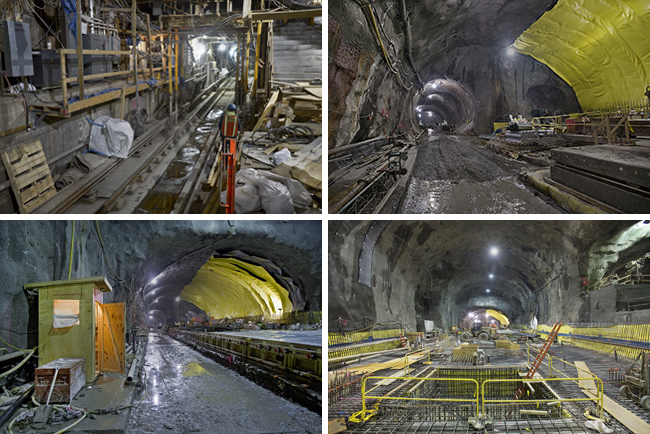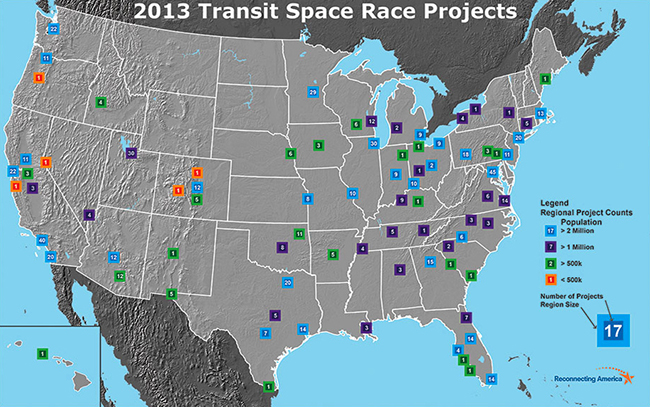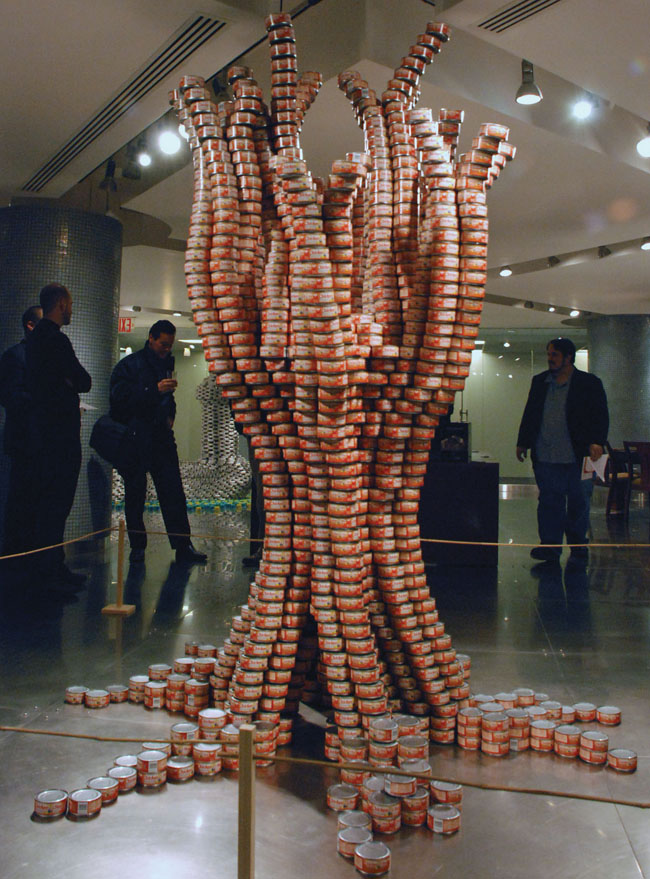
We are celebrating 15 years — and counting — of stories that are deeply researched and deeply felt, that build a historical record of what the city has been.
We are celebrating 15 years — and counting — of stories that are deeply researched and deeply felt, that build a historical record of what the city has been.
PLANNING THE FUTURE OF EAST HARLEM
Manhattan’s Community Board 11 has approved a new zoning plan for East Harlem, the first in over 50 years. The proposal would increase the allowable density of certain areas in an effort to increase the stock of affordable housing, while lowering density in others to protect the character of brownstone neighborhoods. Park Avenue would be rezoned to encourage light industrial and residential use, and hopefully spur commercial activity to activate the sometimes dark and dirty area under the elevated Metro-North commuter rail tracks. According to Hunter Armstrong of Civitas, a group that works to improve the quality of Upper East Side and East Harlem neighborhoods, “the plan is site-specific and incorporates what people said they wanted to see for the future of the neighborhood.”

Construction progress on the 2nd Avenue Subway | Images via MTA/Patrick Cashin
SECOND AVENUE SUBWAY UPDATE
Decades in the making, construction on the 2nd Avenue subway line is well underway. The MTA has released a new gallery of photos documenting the progress made so far. The MTA claims three new stations at 72nd, 86th, and 96th Streets — stations which constitute the first phase of the future “T” line planned to run from Harlem to Lower Manhattan — will be open by 2016. Completion of the rest of the line remains contingent on securing funding.
STRIP THE CITY
On Tuesday, February 5th, the Science Channel will premiere Strip the City, a show that uses advanced CGI to look deep into the buildings that make up cities and the infrastructure that makes them run. Working with architects, engineers and historians, Executive Producer Carlo Massarella says he wanted “to do it in a way that literally took apart the city around the people that existed in it to show them the technology that might be just beneath their feet or in the train or in the subway system.” The show looks at cities that defy logic — such as San Francisco, which is built on a major fault line, and Toronto, a city with a rate of population growth that belies its frigid climate — and exposes historic marvels, such as ancient Rome’s infrastructure and the engineering upgrades of the London underground, the world’s oldest subway.

Left: WXY Architecture/Champions of Pier 40 Proposal, Right: Dattner Architects/Durst Proposal | Images via WXY Architecture and Dattner Architects
DIFFERING PLANS FOR PIER 40
Pier 40, once one of the main revenue generators for financially struggling Hudson River Park, is now in serious need of financing itself, both for immediate repairs (to stop the pier from sinking into the river) and for long term maintenance. The latest proposal for how to transform the pier comes from a group of seven youth sports leagues who call themselves the Pier 40 Champions. The Champions have teamed up with WXY Architecture + Urban Design on a plan that would create 10.5 acres of open space, including new sports fields and an elevated running track, all financed by a 600-residential-unit development on what is now a parking lot. Last month, real estate mogul Douglas Durst released a markedly different proposal with Dattner Architects. Durst argues that housing could be developed anywhere and would be unnecessarily expensive on the pier. He proposes what he considers to be a more efficient adaptive reuse of the space, creating commercial space “likely occupied by tech firms, art galleries, and other decidedly downtown tenants,” as well as more parking.

Map of transit projects across the county | Image via Reconnecting America
TRANSIT SPACE RACE OF 2013
Reconnecting America has put together a map of all under construction and planned fixed guideway transit projects in the United States, from Bus Rapid Transit systems to commuter rails. As of 2013, there are 721 projects in the works, 20 of which are in the New York metropolitan area. The listings vary from projects under construction to some that have been sidelined for years, and many of them are competing for federal funds. Check out the full map here.
SANDY UPDATES
Earlier this week, the Senate and President Obama approved the $50.5 billion Sandy aid package. The money will be divided up among affected communities along the east coast — from Maryland to Connecticut — and amongst various national and local programs, from the National Flood Insurance Program to the Port Authority. The majority of the money will go towards disaster relief, helping homeowners and businesses that suffered heavy losses, while the remainder will be devoted towards mitigation efforts, such as the much-talked-about soft infrastructure developments.
On Monday, FEMA released updated flood maps, a project already in the works before Sandy. The new maps add 35,000 homes and businesses to the now-expanded flood zones, essentially doubling the number of structures considered to be at risk. While these maps will help inform how these at-risk areas prepare for future storms, they will also force homeowners to meet tougher building standards and possibly push up insurance rates.
EVENTS AND TO DOs
A BOAT TRIP THROUGH TIME
On Saturday, artist Robert Bowen will show his film, Recovering Lost Architectural and Cinematic Volumes of Lower Manhattan (1661-2012), at Spectrum, on the Lower East Side. Bowen pulled together archival film media, digital video, and image-based modeled CGI to depict a boat ride taken by filmmaker J.B. Smith on the Hudson in 1903. The silent film, accompanied by Jason Smeltzer on theremin and Wayne Smith on piano, presents “a sonic stereoscopic space-time performance work,” ultimately re-examining the geopolitical landscape of Lower Manhattan and transgressing the boundaries of time and perception. Tickets are $10.
WATERPROOFING NEW YORK
On Saturday, February 9th, the City University of New York’s (CUNY) Spitzer School of Architecture will host Waterproofing New York, a day-long conference to explore the impact of past and future storms on five key infrastructure systems: water/waste, power/data, circulation/fuel, parks and recreation, and shelter. The conference hopes to get people to view the concept of “waterproofing New York” as an act of coordinated yet opportunistic, pragmatic, and inventive city design. Free and open to the public, attendees are requested to RSVP on the event Facebook page.
THE RUINS OF MODERNITY
Architectural theorist Charles Jencks controversially declared July 15th, 1972 — the day that the Pruitt-Igoe Housing Development in St. Louis, MO was torn down — “the day that Modern Architecture died.” Next Thursday, February 7th, the Platypus Affiliated Society will host “The Ruins of Modernity: The Failure of Revolutionary Architecture in the 20th Century,” a panel with Peter Eisenman, Reinhold Martin, Joan Ockman, and Bernard Tschumi. The discussion will ask where contemporary architecture stands in relation to what came before it, what social and political promises Modernism left unfulfilled, and if revolutionary architecture is even possible. The event will be held at the New York University’s Kimmel Center at 7pm, and is free but reservations are required.
CALL FOR PHOTOS: SUPERSTORM SANDY
The Museum of the City of New York is currently accepting submissions for its upcoming Superstorm Sandy Photography Exhibition. Amateur and professional photographers are invited to submit images of the region before, during, and after the storm. Entrants can submit up to 16 photographs until March 3rd. The exhibition will go up in April.
SCAVENGING FOR MODERNISM
Next Saturday, spend the day exploring the city and taking photographs of modern architecture and design in the 2nd Annual Modern Architecture & Design Scavenger Hunt, hosted by OHNY and Docomomo. Participants can work alone or as a team to “learn about modernism in New York – the buildings and public spaces as well as the architects who designed them.” The hunt, which includes prizes, begins and ends with events in SoHo. Scavengers must register online.
CANSTRUCTION
Postponed from November due to Hurricane Sandy, Canstruction will be on display at the World Financial Center in Lower Manhattan from February 1-11. This annual design competition invites 25 teams of architects, engineers, contractors, and students to build structures entirely out of cans of food, which are donated to City Harvest when the exhibition closes. Admission is free, but visitors are asked to bring a can of high-quality food to the exhibition’s collection station.

Tree by Platt Byard Dovell White Architects – Canstruction 2007 | Photo via Ian Korn
The Roundup keeps you up to date with topics we’ve featured and other things we think are worth knowing about.
The views expressed here are those of the authors only and do not reflect the position of The Architectural League of New York.